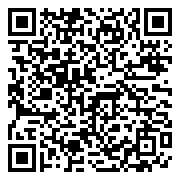Introduction
This course offers a solid foundation in vibration analysis within the context of condition monitoring and predictive maintenance for rotating machinery. Designed specifically for maintenance personnel, technicians, and engineers, it equips participants with practical skills in vibration measurement, fault diagnostics, and the safe use of vibration monitoring tools, in line with Category 1 of ISO 18436-2 standards.
Whether you're new to vibration analysis or looking to strengthen your technical understanding, this course bridges theory and real-world applications to support effective maintenance strategies.
Course Objectives
By the end of this course, participants will be able to:
- Understand the principles and terminology of vibration analysis.
- Properly and safely use vibration monitoring equipment.
- Collect and interpret vibration data from rotating machines.
- Detect common mechanical faults through vibration signals.
- Apply basic analysis techniques to support informed maintenance decisions.
- Contribute to the development of a condition-based maintenance program.
Course Outlines
Day 1: Fundamentals of Vibration
- Introduction to condition monitoring and vibration analysis
- What is vibration – key concepts and definitions
- Measurement units – displacement, velocity, acceleration
- Waveform vs. spectrum – understanding signal types
- Types of vibration: sinusoidal, random, and transient
Day 2: Vibration Measurement Techniques
- Vibration transducers – types and selection
- Sensor mounting techniques and placement
- Data collection tools and standard procedures
- Factors affecting data quality
- Safety considerations and hands-on demonstrations
Day 3: Common Machinery Faults
- Identifying unbalance in rotating machinery
- Misalignment – angular and parallel types
- Mechanical looseness – symptoms and indicators
- Rolling element bearing faults – detection and progression
- Resonance – causes, symptoms, and identification
Day 4: Introduction to Signal Processing
- Fundamentals of Fast Fourier Transform (FFT)
- Spectrum analysis – identifying peaks, harmonics, and sidebands
- Understanding frequency resolution and data ranges
- Basic trending and comparison techniques
- Case studies and real-world examples of vibration signals
Day 5: Practical Applications
- Strategies for vibration data collection
- Reporting vibration analysis findings
- Providing maintenance recommendations
- Setting up a basic vibration monitoring program
- Course recap, Q&A session, and applied troubleshooting
Why Attend this Course: Wins & Losses!
- Hands-on experience using vibration analysis tools and techniques.
- Ability to recognize early signs of mechanical faults, reducing unexpected downtime.
- Clear understanding of how to implement condition-based and predictive maintenance.
- Skill development aligned with ISO 18436-2 Category 1 standards.
- Exposure to real-world examples and case studies increases confidence in diagnostics.
Conclusion
This course is your entry point into the essential world of vibration analysis and condition monitoring. By combining technical theory with real-world application, you will gain the expertise needed to monitor equipment health, identify faults early, and make impactful maintenance decisions.
Take the first step toward improving reliability, reducing downtime, and advancing your career in industrial maintenance—enroll now and transform the way you manage machine health.


